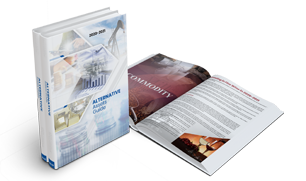
Never miss an important update |
Click to get notified about important updates only. |

99 Alternatives
Opportunities are Infinite
The entrepreneurial and operational activities are classified based on the capital required to start the business transactions, allowing focused analysis regarding entrepreneurs’ financial markets and corporate strategy.
Traditionally, the entrepreneurs’ degree of capital intensity was not considered to be an important indicator of future performance, and the market value per share,
The price-earnings ratio and dividend yields were normally used as indicators.
But, decision-making based on financial factors is very important for companies and requires monetary liquidity – one of the key barriers for potential businesses.
Measuring the degree of capital intensity is necessary to determine if an organization is capital or labour-intensive.
Traditional measures of capital intensity (not based on value-added figures) were –
Total assets to revenue
Property, plant and equipment(PPE) to revenue
PPE to total assets
Depreciation as a percentage of revenue
PPE per employee
It has been observed that during the financial crisis capital intensive industry response was different compared to labour-intensive, and the degree of capital intensity can be used to predict how the firm will react to economic changes as it can provide a valuable source of information for financial decision making.
However, most methods researchers use are developed to get only one aspect of the enterprise being investigated. At the same time, the term capital intensity is not one-dimensional, as multiple factors influence it.
Compared to labour-intensive enterprises, the change in interest rates, rate of inflation and the availability of capital could have a higher negative impact on the capital-intensive enterprise than labour-intensive.
The measurement of capital intensity poses a problem as it includes the measure of total assets to revenue, property, plant and equipment (PPE) to revenue/property/plant and equipment per employee analysis where large investments in the PPE expose the industry to several risks, and changes in the economic cycles can harm the financial performance of the company.
Overall, certain entrepreneurial activities related to some industries require more capital than others. The amount they need to invest always depends on the environment in which the venture seeks the potential, which differs for each venture.
The activities in some industries require more capital as compared to others.
Interest rates - a change in interest rate can change the cost of capital, harming the profitability of a capital-intensive enterprise where a huge per cent of the investment goes into PPE. Nevertheless, even a labour-intensive industry will be affected by the changes in interest rates.
Inflation - At higher inflation, such companies need to ensure that provisions are made for the increased replacement value of the assets.
These firms depend highly on production processes, and huge investments will be required to ensure the industries get adequate capital to continue operations.
But with limited capital, it may not be easy to obtain financial capital to meet the basic requirement.
A shortage means it will have to pay substantially higher to get a limited amount of funds, and in extreme circumstances, it may not be able to obtain the funds required for its needs.
On the other hand, labour intensive is less dependent on PPE and may use relatively more labour in the production processes.
Labour intensive are widely affected by the shortage of skilled workers, and conditions like workers’ strikes and labour unrest (as seen in mining or manufacturing operations) can bring production to a halt.
Underinvestment in labour - A higher level of capital intensity is often caused by underinvestment in labour rather than over expansion and value-added per employee is a measure that is used to investigate the difference between the degree of the capital intensity of private, foreign, local and government-owned enterprise in less developed nations (e.g. Ghana).
Measures of capital intensity based on value-added figures include Salaries to revenue, Value added per employee/ PPE and salaries.
Real estate remains one of the most time-tested...
From liquifying your asset to any time you want to have...
Impact investing in real estate is a growing trend with...
Whether buying your first home or selling your...
What is better Silver or Sterling Silver? We all know...
How much do Twitch Streamers Make? Man is fun-loving...
Copyright © 2025 99alternatives Ltd. All rights reserved.
Designed and Managed by Mont Digital


